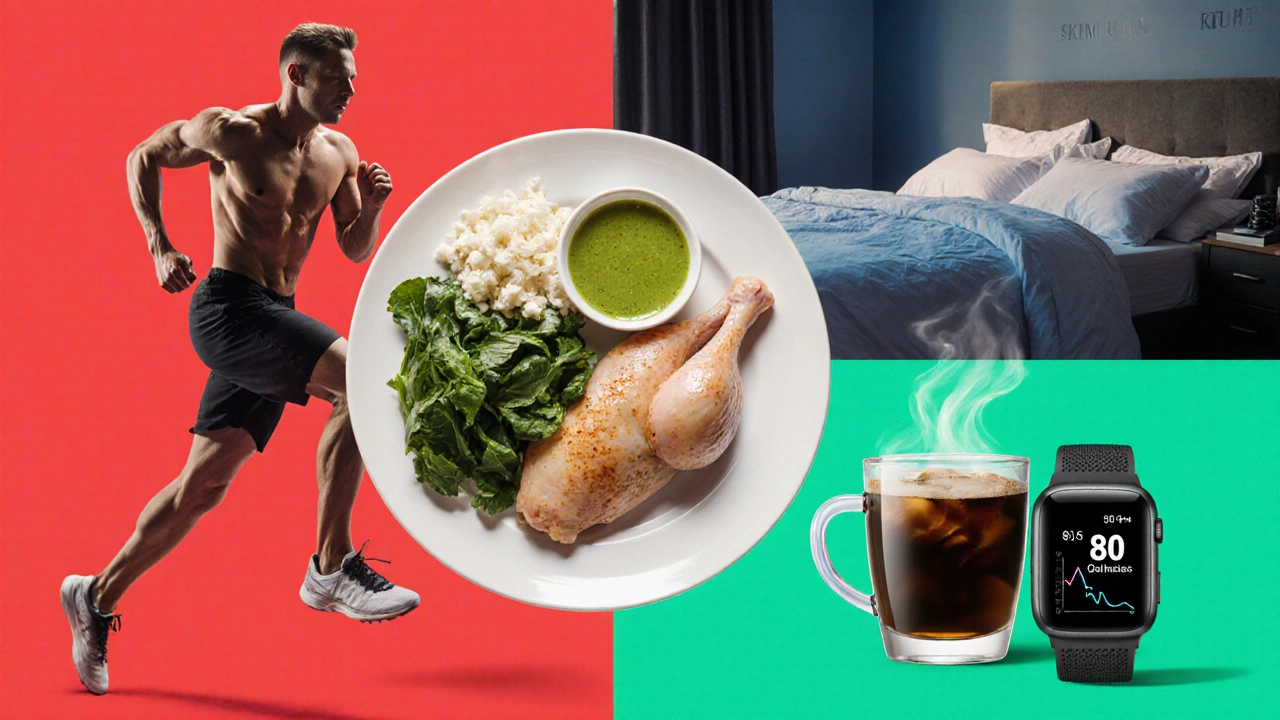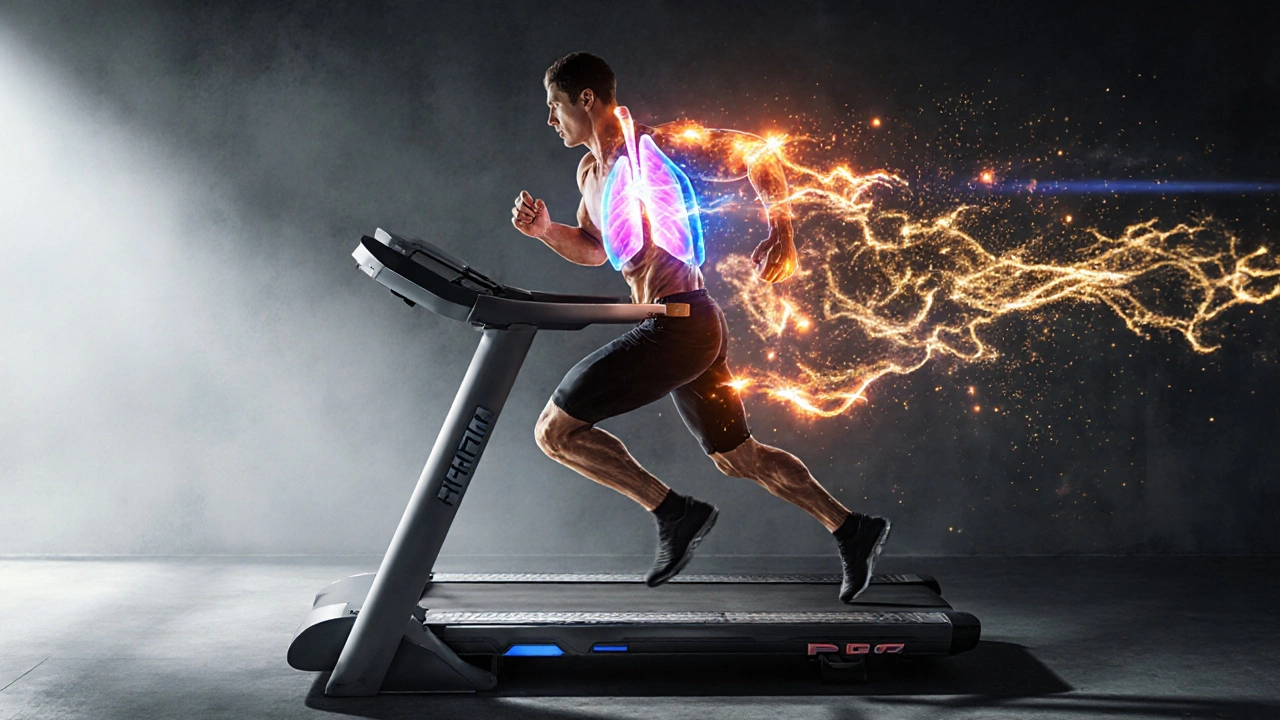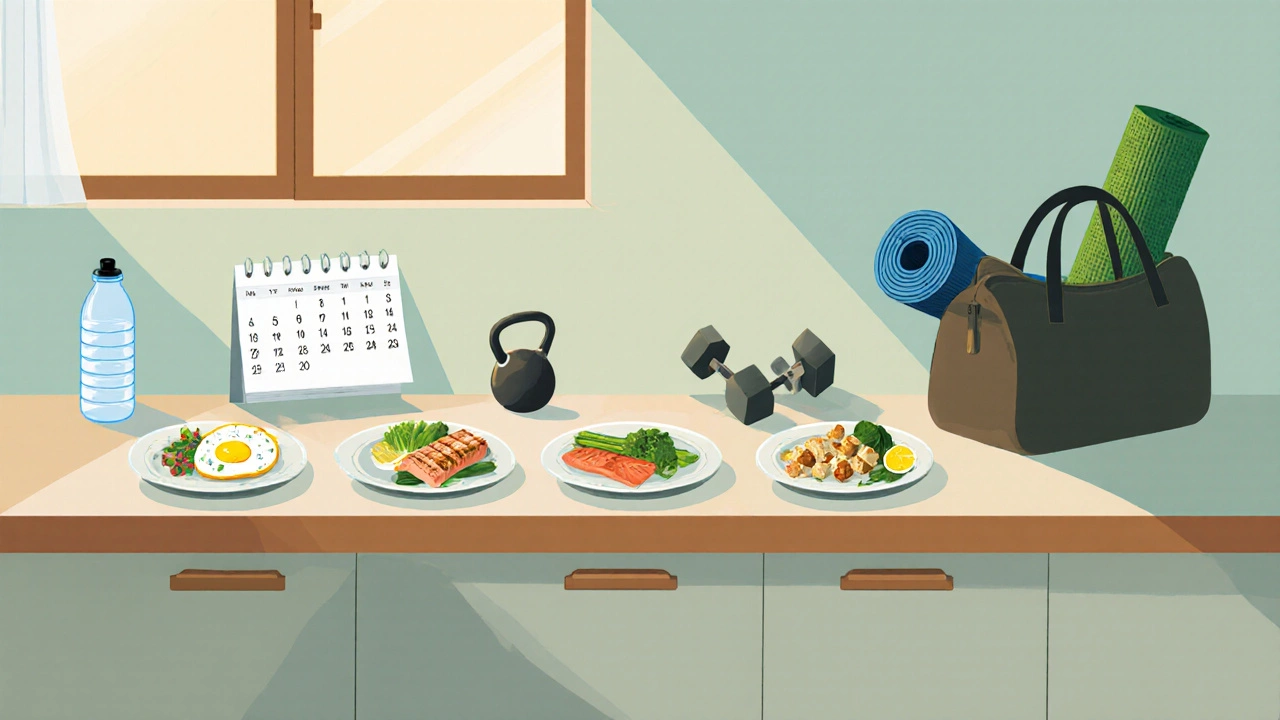Rapid Fat Burning: Proven Ways to Burn Fat Fast

Fat Loss Calculator
Calculate Your Fat Loss Plan
Based on your current weight, target weight, and activity level, we'll calculate the daily calorie deficit you need for effective fat loss.
Quick Summary
- Combine high‑intensity interval training (HIIT) with strength work to keep calories burning for hours after exercise.
- Eat plenty of protein and keep carbs moderate; a low‑carb or intermittent‑fasting approach can shave 0.5-1kg per week.
- Prioritize sleep, manage stress, and move throughout the day (NEAT) to protect metabolic health.
- Caffeine, green tea, and spicy foods provide a modest thermogenic boost.
- Stick to a simple 7‑day plan and track progress to stay motivated.
What is Fat Burning, Anyway?
When we talk about fat burning is the process where the body converts stored triglycerides into usable energy, especially during a calorie deficit, we’re really describing how your metabolism taps into its backup fuel. It’s not magic - it’s chemistry. Hormones like adrenaline and cortisol tell your cells to release fatty acids, which then travel to the mitochondria - the cell’s power plants - and get turned into ATP, the energy currency we all need to move, think, and breathe.
Boosting Your Metabolism
Metabolism isn’t a single number; it’s a collection of processes that dictate how many calories you burn at rest (BMR) and during activity. Raising your BMR means you’ll burn more calories even while binge‑watching your favorite series.
Thermogenesis is the amount of heat your body produces, which directly translates to calories expended can be increased in three ways:
- Exercise‑induced thermogenesis - the calories you burn during a workout.
- Diet‑induced thermogenesis (DIT) - the energy used to digest, absorb, and store food.
- Non‑exercise activity thermogenesis (NEAT) - the tiny movements you do all day, like fidgeting or walking to the kitchen.
Targeting all three gives you the biggest metabolic kick.

High‑Intensity Interval Training (HIIT)
HIIT alternates short bursts of maximal effort with brief recovery periods, typically lasting 10-30 minutes total is a favorite among busy people because it spikes your heart rate, burns glycogen, and triggers the "afterburn" effect (excess post‑exercise oxygen consumption). Research from the Journal of Sports Science in 2023 showed that a 20‑minute HIIT session can increase daily calorie burn by up to 300kcal for 24hours after the workout.
Try this simple routine twice a week:
- 30seconds sprint (or fast bike spin)
- 30seconds walking or slow pedaling
- Repeat 10times
Adjust the work‑to‑rest ratio as you get fitter - a 1:2 ratio (30seconds on, 60seconds off) works well for beginners.
Strength Training: Muscle Matters
Many believe cardio is the sole fat‑loss tool, but muscle tissue burns roughly 6-10calories per pound at rest, compared to about 2calories for fat. Adding 8-10kg of lean mass can increase your BMR by 70-100calories per day - a silent, steady burn.
Focus on compound lifts (squat, deadlift, bench press, row) 2-3 times a week, 3-4 sets of 6-12 reps. Keep the rest period short (60-90seconds) to maintain a higher heart rate.
Nutrition Hacks for Rapid Fat Loss
Food is the biggest lever. Here’s a quick cheat‑sheet:
- Protein: Aim for 1.8-2.2g perkg body weight. It boosts DIT (about 20-30% of calories consumed) and preserves muscle.
- Low‑Carb or Intermittent Fasting: Cutting carbs to ~20-50g per day or adopting a 16:8 fasting window can lower insulin, making fat more accessible.
- Fiber‑rich veggies: Keep you full, low in calories, and help control blood sugar spikes.
- Caffeine & Green Tea: Caffeine stimulates the central nervous system, raising metabolic rate by 3-4% and improves workout performance.
- Spicy Foods: Capsaicin in chili peppers can increase thermogenesis by 50kcal per day.
Lifestyle Factors That Matter
Even the best diet and training plan can flop if you skimp on recovery.
Sleep regulates hormones like leptin and ghrelin, which control hunger and satiety is crucial. Aim for 7-9hours; a night of <5hours can raise appetite hormones by up to 20%.
Stress triggers cortisol, which encourages the body to store fat, especially around the waist. Try daily meditation, deep‑breathing, or a 10‑minute walk to keep cortisol in check.
Boost NEAT by adding micro‑movements throughout the day, such as standing while on calls or taking the stairs. Even a 30‑minute walk after dinner adds 150-200calories burned.

Comparison of Popular Rapid‑Fat‑Loss Diet Strategies
| Strategy | Typical Calorie Range | Macro Ratio (C:P:F) | Pros | Cons |
|---|---|---|---|---|
| Low‑Carb (Keto) | 1,200-1,600 kcal | 5%C / 20%P / 75%F | Rapid appetite control, high satiety | Adaptation phase, possible electrolyte loss |
| Intermittent Fasting (16:8) | 1,400-1,800 kcal | 40%C / 30%P / 30%F | Simple to follow, improves insulin sensitivity | Hunger spikes early on, may affect social meals |
| High‑Protein | 1,300-1,700 kcal | 30%C / 40%P / 30%F | Preserves muscle, high thermic effect | Requires careful protein sourcing, can be pricey |
7‑Day Sample Rapid Fat‑Burning Plan
Feel free to swap days based on your schedule, but keep the core principles - HIIT, strength, protein‑rich meals, and adequate sleep.
- Monday: HIIT (20min) + upper‑body strength (30min). Meals: eggs, spinach, avocado; grilled chicken, quinoa, broccoli.
- Tuesday: Light cardio walk (45min) + NEAT focus (standing desk). Meals: Greek yogurt, berries; salmon, mixed greens, olive oil.
- Wednesday: Strength lower‑body (45min). Meals: protein shake, nuts; turkey mince stir‑fry with peppers.
- Thursday: HIIT (20min) + core circuit (15min). Meals: cottage cheese, cucumber; lean beef, cauliflower rice.
- Friday: Active recovery (yoga or swim, 30min). Meals: tofu scramble, mushrooms; baked cod, asparagus.
- Saturday: Long walk/hike (60min) + NEAT (yard work). Meals: omelet with salmon, avocado; chicken salad with nuts.
- Sunday: Rest, focus on sleep and stress reduction. Meals: protein‑rich brunch, then light vegetable soup.
Track your weight and waist weekly, not daily, to see real trends.
Common Pitfalls and How to Dodge Them
- Going too low on calories - under 1,200kcal can trigger hormonal slowdown and muscle loss.
- Neglecting strength work - cardio alone burns calories but can shave off muscle, hurting long‑term metabolism.
- Skipping sleep - less than 7hours raises ghrelin by ~15% and makes cravings worse.
- Relying on “quick‑fix” supplements - most have marginal effects; focus on whole foods and caffeine if needed.
- Not staying hydrated - water aids lipolysis; aim for 2-3L per day.
Frequently Asked Questions
Can I see noticeable fat loss in a week?
Yes, especially if you’re new to structured training. A 0.5-1kg drop in weight (mostly water and some fat) in the first 7days is realistic with a 500-750kcal daily deficit combined with HIIT.
Is a low‑carb diet safe for everyone?
Most healthy adults tolerate a moderate low‑carb approach, but people with kidney issues, pregnancy, or Type1 diabetes should consult a doctor before cutting carbs drastically.
How many days a week should I do HIIT?
Two to three sessions per week are enough. More than that can increase injury risk and make recovery harder.
Will I lose muscle if I cut calories fast?
If you keep protein high (1.8g/kg) and continue strength training, muscle loss is minimal. A deficit larger than 1,000kcal per day raises the risk.
Do I need supplements to boost fat loss?
Supplements like caffeine or green‑tea extract can add a few extra calories burned, but they’re not game‑changers. Focus on whole foods, sleep, and movement first.